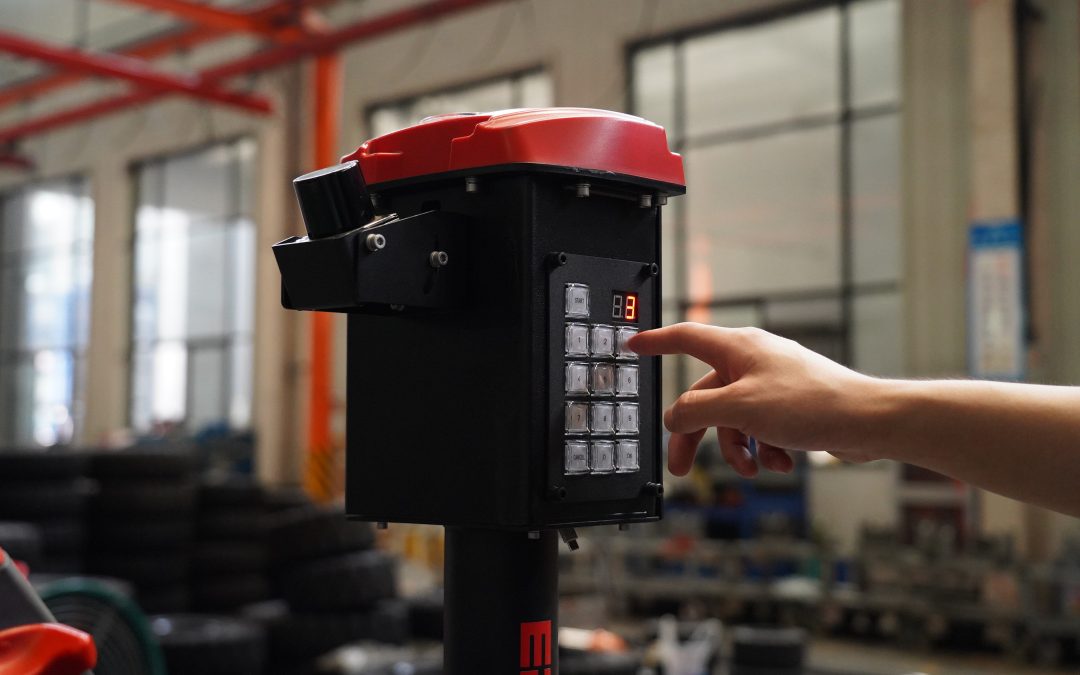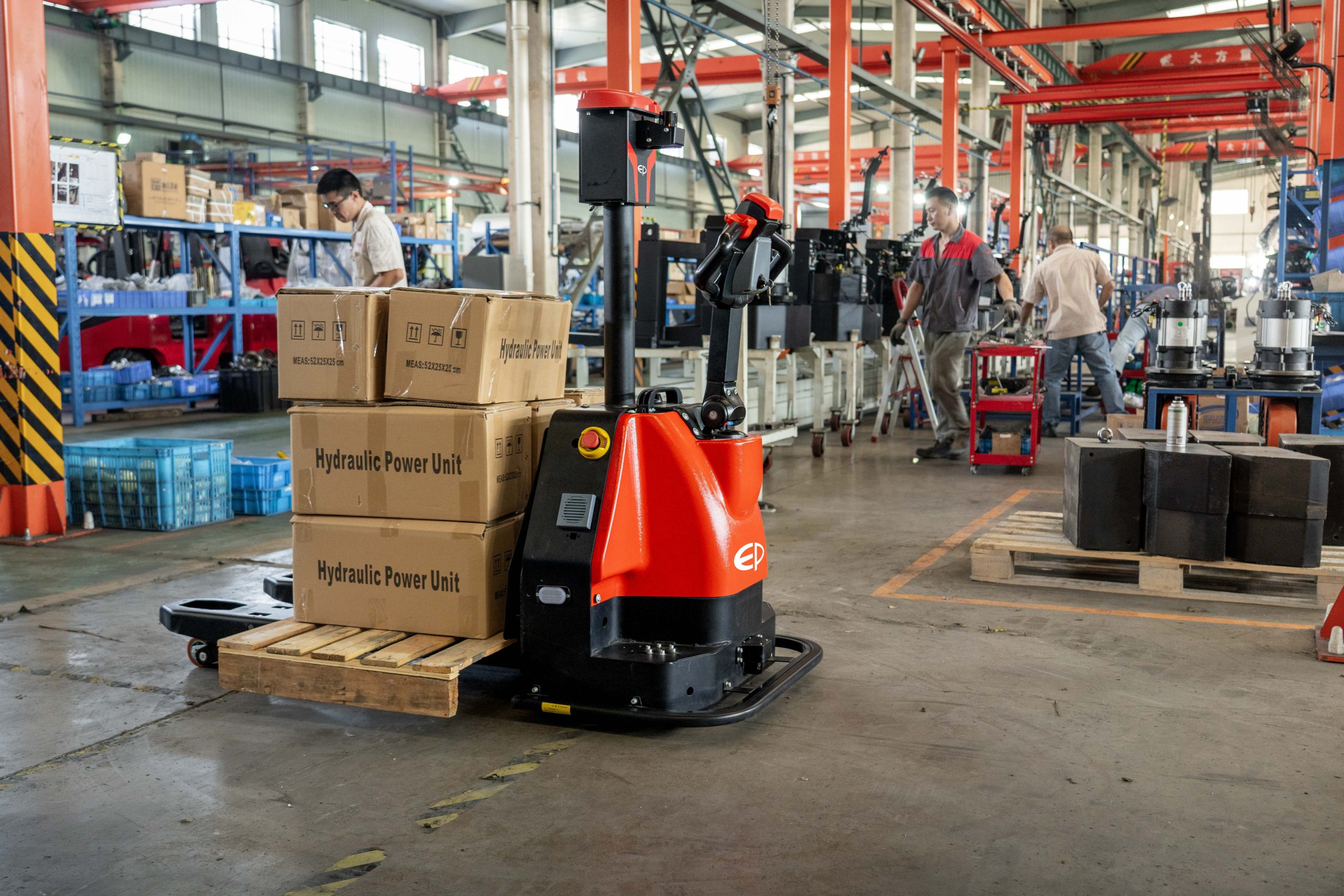In recent years, the integration of technology into various industries has given rise to innovative solutions, and one such groundbreaking advancement is the advent of Autonomous Mobile Robots (AMRs). AMRs have become an integrating part of various industrial processes, especially in warehouses and logistics environments. In this article we will learn more about the world of AMRs, exploring what they are, what types of autonomous mobile robots exist, the difference between AMRs and AGVs and how EP Equipment is embracing this technology through the XP15.
What is an Autonomous Mobile Robot?
An Autonomous Mobile Robot (AMR) is a specialized robotic system that is designed to perform tasks and navigate within its environment without constant human guidance. AMRs are equipped with a combination of sensors, cameras, and sophisticated algorithms that enable them to perceive their surroundings, make decisions, and move autonomously. Unlike traditional robots that operate within predefined paths or require continuous human control, AMRs have the capability to adapt to dynamic environments, avoid obstacles, and modify their routes in real-time.
The main purpose of Autonomous Mobile Robots is to enhance efficiency and productivity in various environments by automating tasks that are often executed by humans, such as material handling, transportation and data collection. Autonomous mobile robots play a crucial role in many sectors like manufacturing, logistics, healthcare etc., offering a wide range of applications to improve operational efficiency.

The Robot arm picks up the box to Autonomous Robot transportation in warehouses, Warehouse automation concept. 3D illustration
What types of Autonomous Mobile Robots are there?
Different types of autonomous mobile robots exist in the industry, tailored to specific tasks or industries of application. Here we want to introduce some common types.
Goods-to-Person Robots (G2P)
Goods-to-Person Robots (G2P) AMRs are designed to transport goods to workstations where operators can perform tasks such as picking and packing. These autonomous warehouse robots are widely used in e-commerce and distribution centers to optimize daily processes, reducing the need for human workers to navigate across large warehouses.
Autonomous Inventory Robots
This kind of AMRs are equipped with sensors and cameras and is designed to perform routine inventory checks autonomously. They help with maintaining accurate inventory records and identify discrepancies in stock levels. These AMRs are ideal for large warehouses and manufacturing facilities to improve inventory management and reduce stockouts or overstock situations.
Collaborative Robots (Cobots)
What differentiates Cobots AMRs from traditional industrial robots is that they are designed to work alongside human workers. They are equipped with safety features to ensure a safe working environment. These autonomous warehouse robots are used in various industries, including manufacturing and logistics, where human and robot collaboration enhances efficiency and flexibility in workflows.
Autonomous Cleaning Robots
These AMRs are designed to perform cleaning and maintenance tasks. They navigate autonomously and perform cleaning operations in predefined areas. Such AMRs are deployed in environments such as offices, airports, and large facilities to automate routine cleaning tasks, improving overall cleanliness and hygiene.
What is the difference between AGV and AMR?
While both Automated Guided Vehicles (AGVs) and Autonomous Mobile Robots (AMRs) have the common purpose of automating material handling processes, there are key differences between them.
The main difference lays in navigation. AGVs typically follow predetermined paths or routes within a facility. These paths are often marked by physical guides such as embedded wires, magnets, or markers on the floor. On the contrary, AMRs navigate autonomously using a combination of sensors, cameras, and advanced algorithms. They don’t require fixed paths and can adapt to dynamic environments, making real-time decisions and adjusting their routes based on the surrounding conditions.
Another difference is that AGVs are generally less flexible when it comes to adapting to changes in the environment or workflow. They are designed for repetitive tasks along fixed routes. On the other hand, AMRs are known for their flexibility and adaptability as they can navigate around obstacles, avoid dynamic changes in the environment and re-plan their routes autonomously.
How are AMRs transforming warehouses?
The integration of AMRs into warehouse operations has originated in a new era of efficiency, accuracy, and flexibility. Let’s take a closer look on how AMRs are revolutionizing the way warehouses operate.
Increased Efficiency in Material Handling
In traditional warehouses, human workers or manually operated equipment are often in charge of transportation. AMRs automate these tasks, efficiently moving goods from one place to another. This results into a significant reduction in the time require for material handling, leading to faster order fulfillment and improved overall efficiency.
Optimized Order Picking
In manual picking processes, workers navigate through aisles to locate and retrieve items. AMRs automate this process by bringing themselves shelves or bins directly to workers. Such automation process results into a reduction of travel time for workers, minimizing errors in order picking and contributing to faster and more accurate fulfillment of customer orders.
Dynamic Adaptability to Warehouse Layouts Changes
Traditional AGVs often require fixed paths or guides, limiting adaptability to changes in warehouse layouts. AMRs navigate autonomously without fixed paths. This allows more flexibility in changes of the warehouse environment, as AMRs can easily adapt to changes in warehouse layouts, making them ideal for dynamic environments where layouts may need frequent adjustments.
Enhanced Workplace Safety
Manua material handling tasks, such as lifting heavy items, can pose safety risks for workers. AMRs are designed to work alongside humans safely. This way, AMRs contribute to a safer work environment by handling repetitive or physically demanding tasks, reducing the risk of injuries and improving overall workplace safety.
24/7 Operations
Manual operations may be constrained by human working hours. AMRs can operate continuously, contributing to increased throughput and efficiency. Thanks to AMRs, warehouses can achieve round-the-clock operations, meeting high-demand periods and optimizing overall throughput.
EP’s AMR XP15
In 2023, EP Equipment launched a new entry level semi-automated pallet truck. Just like all the products from EP, the AMR XP15 reflects as well EP’s philosophy of designing products that simply work. This Co-bot is in fact the perfect choice for whoever wants to start with automation. Why? It’s uncomplicated, easy to install – can be installed by anyone, increases the efficiency in your warehouse and comes with a competitive price no one offers in the industry.
The XP15 from EP Equipment navigates through the warehouse through reflectors placed on the ceiling ‘by the stars’. It offers different operating modes such as sushi bar, simple drop, call box, and easily adapts to various applications. Do you want to know more about it? Contact our team for more information.


